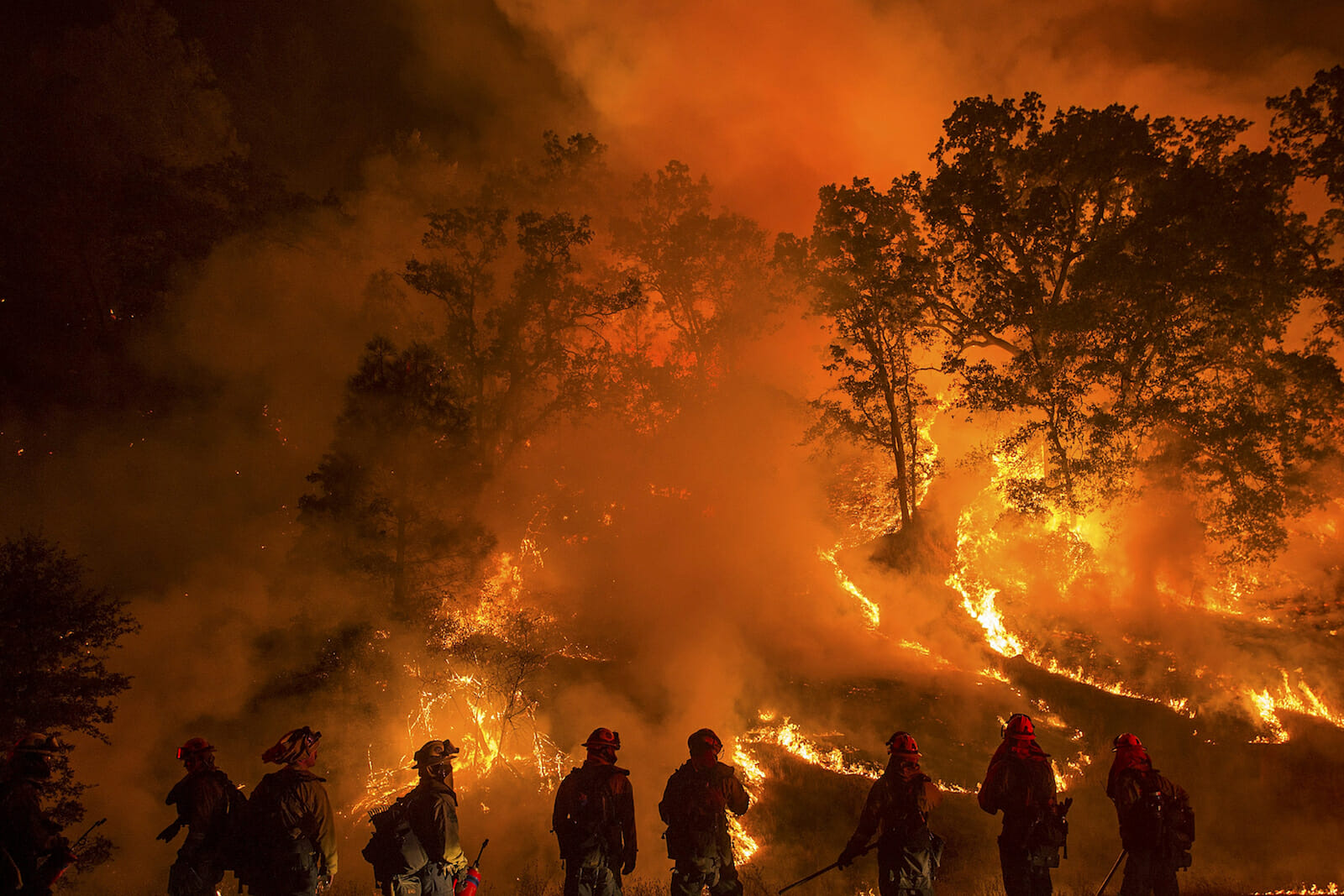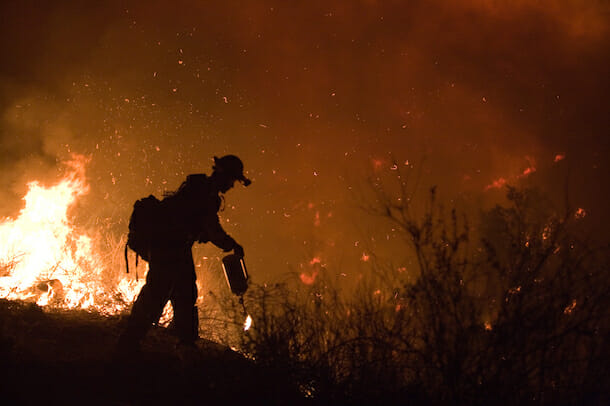
Is Anthropogenic Climate Change the Reason Wildfires Are Getting Worse?
Studies have shown for years now that wildfires are only becoming more common over time. It’s been a difficult thing to research, historically speaking, because of the myriad of variables and influences that conspire to create situations like the ongoing Mendocino Complex Fire in California. This fire is already the worst in the state’s recorded history and has consumed more than 305,000 acres, adding to a seasonal total of well over 820,000 acres lost to fires.
Over the last decade, the total financial cost of losses from wildfires in the U.S. is reportedly in excess of $5.1 billion altogether, which is to say nothing of the cost in human lives. The clear message is that an increase in wildfires carries a hefty ethical and literal price tag — one what’s worth understanding to the best of our abilities.
So far, the emerging research all points to the conclusion that anthropogenic climate change is the likeliest culprit in the worsening severity and frequency of wildfires — and the proximate problem we need to focus on if we want to get real about making sure things like the current state of California don’t happen again on our watch.
How Climate Change Influences Wildfires
For a study of cause-and-effect this complicated and consequential, you want the most authoritative voices in the field. For that, you can turn to newly published research from the National Center for Atmospheric Research as well as the University of California Santa Barbara’s Bren School of Environmental Science and Management.
The central question they set out to answer comes in two parts: are Earth’s major climate patterns, such as El Niño – Southern Oscillation (“ENSO” in environmental science terms) being influenced and made more destructive by humanity’s industrial activities? And, if so, are disruptions in climate and weather patterns making the conditions for wildfires more common — and simultaneously more difficult to fight once they’re burning?
These two groups’ published research (find it in the American Geophysical Union Journal) suggests unfortunate answers to these questions. Said Samantha Stevenson, who, co-authored the paper: “Typically, what happens during an El Niño or La Niña event is you get changing atmospheric circulation patterns. These changes in atmospheric circulation patterns…can cause shifts in things like wind patterns, cloud cover, atmospheric temperature and precipitation, which then affect conditions on land.”
Exactly which conditions? The conditions which influence the likelihood of wildfires to begin and to spread — and the conditions which make them difficult to manage, as the ongoing Mendocino Complex Fire has been. “The land is going to be evaporating more moisture,” as Stevenson put it. “Add an El Niño event on top of that…and the level of evaporation will increase. With drier soils and fuels, the likelihood and intensity of wildfires are also bound to increase.”

Another Climate Call-to-Action
This avenue of scientific research underlines one of the critical pieces in our ongoing conversations about, and responses to, anthropogenic climate change: that evidence pointing to a human influence on climate patterns can manifest in surprising ways.
In this case, it’s fluctuations in the El Niño and El Niña seasons rendering inland areas more vulnerable to wildfires. The published research stresses that these climate scientists aren’t making future predictions on the “strength” of future ENSO events. What they’re emphasizing is that areas which are already prone to wildfires will experience worse fires. Plus, other areas which historically had low risks of fires breaking out will now need to be watched much more closely, because they may be newly at risk.
California wildfires are being magnified & made so much worse by the bad environmental laws which aren’t allowing massive amounts of readily available water to be properly utilized. It is being diverted into the Pacific Ocean. Must also tree clear to stop fire from spreading!
— Donald J. Trump (@realDonaldTrump) August 6, 2018
Predictably, there are dissenting opinions when it comes to the proximate causes of the worsening wildfire situation in Mendocino, California, and elsewhere. Some discussions focus on purported mismanagement of some of these at-risk acres, including what some authorities refer to as “the accumulation of biomass” on fire-prone land. Studies reference an overabundance of “fuels” in areas where blowdown hasn’t been cleared, for example, which can help accelerate a spreading fire.
None of these observations are incorrect, exactly — they’re just part of a larger picture that is just now coming together, thanks to science. But there is, unfortunately, a stubborn misunderstanding in the collective unconsciousness when it comes to just how vulnerable the environment’s patterns are to human activities. There is also an almost total lack of a common understanding of how wildfires relate to climate change. Even the sitting commander-in-chief has concluded, evidently without the aid of a science advisor, that California’s unprecedented situation right now is not a result of anthropogenic climate change, or even misused land, but “unfair water regulations.”
An Ounce of Prevention
Wildfires can sometimes play a cleansing, resetting role in certain ecosystems. Lest it be forgotten, though, they’re not a foregone conclusion anywhere. Many of them are preventable.
Educational initiatives may help prevent wildfires. Some nonprofits and insurance companies offer programs that educate homeowners and landowners about wildfire triggers like uncleared brush they might unknowingly have on their properties. Prevention also means learning about even the lesser-known causes of wildfire ignitions, such as (if you can believe it) a carelessly discarded glass bottle on a highway directing harsh sunlight and igniting dry grass.
The point is, science understands the connection between climate change and wildfires now better than ever. And now people everywhere have one more way to talk about how climate change occurs in the real world — and a responsibility to do so.

